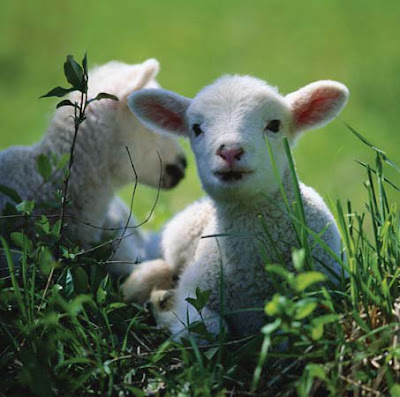Here are some excellent ways to celebrate the arrival of spring with insect and animal studies, gardening ideas, and nature inspired activities!
Spring Animal and Nature Study and Activity Ideas for the Montessori Classroom
Children of all ages love baby animals! Contact your local poultry farm and see if they can help you by supplying an incubator and fertilized chicken eggs. Typically, the eggs and incubator are delivered about 2 days before they hatch. The children observe the eggs and watch them hatch. Older children can use their journals to record the information and younger ones can draw before and after pictures. The baby chicks usually stay in the classroom for another two days so the children can experience those fascinating little "peeps". This is an excellent way to discuss the parts of an egg, the parts of a chicken, lifecycles of eggs and chickens, external fertilization (upper elementary), as well as death and grieving.
Butterflies are symbols of spring! And what's really fascinating for young children is being able to watch the entire lifecycle happen right before their eyes. Children are able to watch caterpillars change to chrysalis and finally emerge as beautiful butterflies. They can then be observed (see ideas above) and released into the wild. One Montessori school I taught at had a tradition where each classroom raised butterflies, then released them all at the same time on the playground. It was a truly awe-inspiring moment. Topics to study include: lifecycle of butterflies; migration of monarch butterflies; visit a butterfly house at a local museum of natural history or botanical garden. You can gather butterfly eggs yourself and create your own butterfly habitat or you can search online for live butterfly rearing kits to be delivered your school.
Rrrrrribit! Tadpoles are amazing creatures. Just how do they turn into frogs? Here's another way to let children experience biology with hands-on experience. Have a pond nearby? Grab some nets and catch some tadpoles. Live in an urban environment? That's ok, too, as there are plenty of places to order "Grow-a-frog kits".
 If you have access to a small plot of land, gardening is a wonderful way to teach children about the interconnectedness of all living things. From the time infants are able to sit up and hold a small spade, children are fascinated with digging in the dirt. Ideally, the children should be able to go outside as they wish, to work in the garden, observe nature, paint, or work outside. Montessori Services makes a wide variety of child-size gardening tools to make gardening accessible to the youngest of children. There are plenty of different gardens to choose from:
If you have access to a small plot of land, gardening is a wonderful way to teach children about the interconnectedness of all living things. From the time infants are able to sit up and hold a small spade, children are fascinated with digging in the dirt. Ideally, the children should be able to go outside as they wish, to work in the garden, observe nature, paint, or work outside. Montessori Services makes a wide variety of child-size gardening tools to make gardening accessible to the youngest of children. There are plenty of different gardens to choose from:- Vegetable garden – Children can discover where food comes from as well as discovering and trying new foods.
- Butterfly garden – By planting nectar-producing plants, a butterfly garden is a great way to view butterflies and contribute toward their conservation, as many butterfly habitats have been lost to urbanization.
- Peace gardens – When we work together, we come together and learn things about each other that we didn't know previously. Gardening helps children celebrate diversity and they take pride in the gardens they create. They can use their special spaces to incorporate messages of peace and then share these spaces with others. The National Gardening Association has a terrific website, that has activities for creating symbols in your peace garden as well as how to decide what food and culture will be represented in the peace garden. They also sponsor grants to help children develop gardens.
Spring is a time when we feel alive. Our very being rejoices and cries out to go outside, to dig in the dirt, to plant things and watch them grow, to sit and silently observe the world around us. It's time to reawaken the child within and to rekindle the lives of the children we teach. As Dr. Montessori said "Our aim is not only to make the child understand, and still less to force him to memorize, but so to touch his imagination as to enthuse him to his innermost core."
NAMC’s Lower Elementary blackline masters contain over 1,100 pages of nomenclature material, charts and diagrams that include, for example, the different parts of plants, parts of a butterfly, the life cycle of the frog and much more: Sample Lower Elementary Botany blackline masters.
As much as possible, NAMC’s web blog reflects the Montessori curriculum as provided in its teacher training programs. We realize and respect that Montessori schools are unique and may vary their schedules and offerings in accordance with the needs of their individual communities. We hope that our readers will find our articles useful and inspiring as a contribution to the global Montessori community.
© North American Montessori Center - originally posted in its entirety at Montessori Teacher Training on Wednesday, March 19, 2008.
© North American Montessori Center - originally posted in its entirety at Montessori Teacher Training on Wednesday, March 19, 2008.



0 comments:
Post a Comment
Have questions or comments? Let us know what you thought about this article!
We appreciate feedback and love to discuss with our readers further.